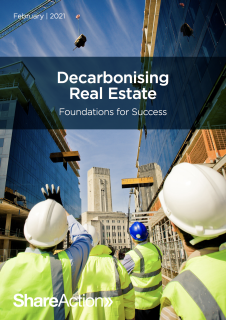
Energy use in buildings contributes more than 17.5 percent to global greenhouse gas emissions, and their construction is a key driver behind demand for steel and cement, which together are responsible for another 10.2 percent of emissions. Hence, decarbonising the real estate sector is unavoidable in order to reach net zero emission targets by 2050.
The European Union is bringing forward a raft of regulation to bring the sector on track. This includes the potential addition of buildings’ emissions in the EU Emission Trading System (EU ETS), and directives for energy performance and sustainable construction materials. As a result, existing building stock without extensive retrofits, and non-aligned new housing, are at high risk of significant losses in value.
In order for investments to be aligned with the Paris Agreement, buildings need to reduce both their embodied carbon, in other words the emissions that are “locked into” the structure of the buildings (such as emissions from the steel, windows or insulation produced to construct, maintain and refurbish a building), as well as their operational carbon, in the form of emissions from energy used for heating, running appliances and other end uses.
Ultimately, for Paris alignment, according to the European Union and the World Green Building Council, all new buildings must already be built as nearly-zero energy buildings (NZEB), and have net zero operational carbon by 2030. Further, they must have a 40 percent reduction in embodied carbon by 2030 and have net zero embodied carbon by 2050. Existing buildings need to be retrofitted at a rate of 5 percent annually and must also have net zero operational and embodied carbon by 2050.
Getting to net zero embodied and operational carbon relies on a multitude of solutions ranging from decarbonising input materials, net zero design, and carbon neutral construction, to renewable energy solutions, heat pumps (to replace fossil fuel-based heating) and smart technology, alongside increased reuse and recycling of construction materials. Part I of this report outlines the technical steps on the road to decarbonisation for buildings in detail.
Action today could save the industry $1 billion, while a ten-year postponement may cost up to $2,500 billion. Investors can be at the forefront of ensuring a timely transition. They can put pressure on the industry to align practices with the goals of the Paris Agreement, consequently safeguarding existing and future investments, as well as preserving our planet and economy for future generations.
